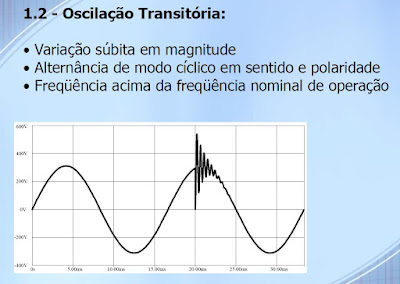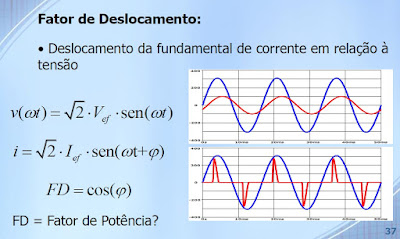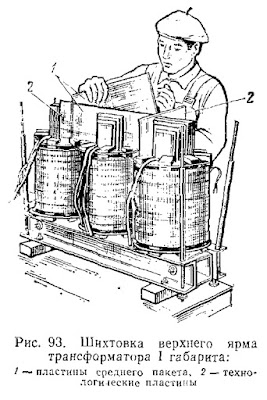domingo, 8 de outubro de 2017
QUALIDADE DE ENERGIA Eng. Msc Jonathan Dômini Sperb, Prof.Dr. Eng.Marcello Mezaroba DISCIPLINA CONDICIONADORES DE ENERGIA UNIVERSIDADE DO ESTADO DE SANTA CATARINA UDESC BRASIL
QUALIDADE DE ENERGIA Jonathan Dômini Sperb, Eng. Msc. Prof. Marcello Mezaroba
DISCIPLINA CONDICIONADORES DE ENERGIA
JOINVILLE-CENTRO DE CIÊNCIAS TECNOLÓGICAS
UNIVERSIDADE DO ESTADO DE SANTA CATARINA UDESC BRASIL
Qualidade de Energia:
Aumento da utilização do termo Qualidade de Energia
–Pela concessionária (geração, transmissão e distribuição)
–Pelos consumidores (indústrias)
LINK ORIGINAL DO ARTIGO:
http://www.joinville.udesc.br/portal/professores/mezaroba/materiais/CEN___Aula_01___Qualidade_de_Energia.pdf
sábado, 30 de setembro de 2017
Introduccion Al Analisis De Circuitos Edicion 10 Robert L. Boylestad
NAVEGANDO HOY EN LA INTERNET ENCONTRE ESTE EXCELENTE LIBRO ESTUDIE CON EL CUANDO ESTUDIE INGENIERIA ELECTRONICA EN LA GLORIOSA UNIVERSIDAD NACIONAL MAYOR DE SAN MARCOS LINMA PERU,ES DE ACCESO LIBRE ESTA EN EL SITE ARCHIVE.ORG UN PROYECTO UNIVERSAL DE DIFUSION DEL CONOCIMIENTO.
Introduccion Al Analisis De Circuitos Edicion 10 Robert L. Boylestad by Robert L. Boylestad
Topics
Introduccion, Analisis, Circuitos, Edicion, 10, Robert, Boylestad Collection opensource Language Spanish Ésta es la edición actualizada del texto Introducción al análisis de circuitos, que durante más de tres décadas ha sido el clásico en este campo. Desarrolla la presentación más completa de la materia e incluye ejemplos que ilustran paso a paso los procesos y los fundamentos del campo con una base sólida y accesible. Es uno de los libros mas usados y recomendados para empezar en el mundo de la electrónica. Conceptos claros y profundamente explicados para lograr el mejor entendimiento y asimilación de los fenómenos.
LINK ORIGINAL EN LA WEB:
https://archive.org/details/IntroduccionAlAnalisisDeCircuitosEdicion10RobertL.Boylestad
LINK DIRECTO DEL LIBRO
https://archive.org/download/IntroduccionAlAnalisisDeCircuitosEdicion10RobertL.Boylestad/Introduccion%20al%20analisis%20de%20circuitos%20-%20Edicion%2010%20-%20Robert%20L.%20Boylestad.pdf
domingo, 24 de setembro de 2017
Transformer comparison by core form and winding structure Woong-Jae Kang Department of Electrical Engineering Graduate School Gyeongsang National University
Flyback Transformer Performance by Core and Winding Structure
Abstract
Transformer comparison by core form and winding structure Woong-Jae Kang Department of Electrical Engineering Graduate School Gyeongsang NationalUniversity
Supervised by Professor Hwi-Beom Shin
The leakage inductance of the flyback transformer causes the voltage spike in the MOSFET switch. The RCD snubber is typically used to reduce the voltage spike. The current method change the transformer winding structure to reduce effect of leakage inductance, because it is difficult to reduce influence of leakage inductance any more in circuit improvement. In this paper, it show the change for voltage spike and ringing depending on winding structure and core form of transformer.
LINK
http://www.mediafire.com/file/6kj45ksizg7z5m2/FLYBACK_PLANO.pdf
terça-feira, 5 de setembro de 2017
Development of Photovoltaic Inverter used Grid-Connected Distributed Power Jeong-Do Kim Department of Electrical Engineering Graduate School Pukyong National University
Development of Photovoltaic Inverter used Grid-Connected Distributed Power
Jeong-Do Kim
Department of Electrical Engineering Graduate School Pukyong National University
Abstract
This paper relates to grid-connected single-phase inverter system, the proposed system is a gate pulse signal was added to the active auxiliary resonant circuit in the bridge arm of a conventional grid-connected single-phase half-bridge inverter, main switch is modulated by the SPWM method by configuring so that the, take a feature that can control the multi-phase alternating current can be used in the batch phase inverter. And active by the secondary resonance also work during the snubber circuit a dead time period, soft switching is possible because it actually turns a basic switch in the on state-off and resonant operation after turning the other main switch-which was applied to the whole of the gate signal have the characteristic. Further, when the conventional program is shorter than the width of the gate pulse signal active auxiliary resonant snubber operation time in the operation in the hard switching to occur even if the H, L is the reverse of the gate pulse signal. This power supply is in reversal of the power supply circuit is a short circuit may possibly be damaged since. To prevent this, this paper has set the ARCP operation time and modulation rate settings and processes the pulse of the gate pulse signal reversal was the program not to occur. 114 Further, as the main switch is in the off state to the time when the other switch is turned on, and the dead time is a hard switching method in case of the conventional method to sequence the switching pattern 1.5[μs], While for setting the dead time of the soft switching system with 2.0[ms], For this paper the sequence switching patterns applied to the soft-switching method is 4.0[μs] because the pulse width of the hard-switched at the same modulation rate and time to get a high density to suppress the resonant inductor current as a whole small effect of improving the efficiency have. Running a soft switching operation by the switching pattern sequence scheme applied to the paper, it is possible to suppress the surge voltage and the surge current, the generation of noise of the device is reduced as compared to the effect of the hard switching method.
LINK:
http://www.mediafire.com/file/1dyn6jy9g5767gj/PHOTOVOLTAIC_INVERTER.pdf
quinta-feira, 31 de agosto de 2017
A High Efficiency Two-stage Inverter for Photovoltaic Grid-connected Generation Systems Jiang Liu,Shanmei Cheng ,and Anwen Shen - Huazhong University of Science and Technology, Wuhan, China
Fig. 3. Conventional BHB inverter and proposed two-stage inverter ( (a) conventional BHB topology, (b) proposed two-stage topology, (c) conventional asynchronous PWM modulation method, (d) proposed time-sharing synchronous PWM modulation method, (e) conventional separate dual loop controller, (f) proposed hybrid current controller).
A High Efficiency Two-stage Inverter for Photovoltaic Grid-connected Generation Systems Jiang Liu,Shanmei Cheng ,and Anwen Shen Huazhong University of Science and Technology, Wuhan, China
Abstract
Conventional boost-full-bridge and boost-hybrid-bridge two-stage inverters are widely applied in order to adapt to the wide dc input voltage range of photovoltaic arrays. However, the efficiency of the conventional topology is not fully optimized because additional switching losses are generated in the voltage conversion so that the input voltage rises and then falls. Moreover, the electrolytic capacitors in a dc-link lead to a larger volume combined with increases in both weight and cost. This paper proposes a higher efficiency inverter with time-sharing synchronous modulation. The energy transmission paths, wheeling branches and switching losses for the high-frequency switches are optimized so that the overall efficiency is greatly improved. In this paper, a contrastive analysis of the component losses for the conventional and proposed inverter topologies is carried out in MATLAB. Finally, the high-efficiency under different switching frequencies and different input voltages is verified by a 3 kW prototype.
Keywords: Overall efficiency, Photovoltaic array, Time-sharing synchronous modulation, Two-stage inverter
LINK FULL TEXT: http://jpe.or.kr/archives/view_articles.asp?seq=1351
terça-feira, 29 de agosto de 2017
Elimination of the Inrush Current Phenomenon Associated with Single-Phase Offline UPS Systems Syed Sabir Hussain Bukhari, Shahid Atiq and Byung-il Kwon * Department of Electronic Systems Engineering, Hanyang University ERICA, South Korea
Elimination of the Inrush Current Phenomenon Associated with Single-Phase Offline UPS Systems Syed Sabir Hussain Bukhari, Shahid Atiq and Byung-il Kwon * Department of Electronic Systems Engineering, Hanyang University ERICA, Ansan 426-791, Korea
Abstract: Critical load applications always rely on UPS systems to uphold continuous power during abnormal grid conditions. In case of any power disruption, an offline UPS system starts powering the load to avoid blackout. However, this process can root the momentous inrush current for the transformer installed before the load. The consequences of inrush current can be the reduction of output voltage and tripping of protective devices of the UPS system. Furthermore, it can also damage the sensitive load and decrease the transformer’s lifetime. To prevent the inrush current, and to avoid its disruptive effects, this research suggests an offline UPS system based on a current regulated inverter that eliminates the inrush current while powering the transformer coupled loads. A detailed comparative analysis of the conventional and proposed topologies is presented and the experiment was performed by using a small prototype to validate the performance, and operation of the proposed topology. Keywords: uninterruptible power supply; offline; inrush currents; current regulation
VIEW FULL TEXT :
https://pdfs.semanticscholar.org/0374/8dcd3f5ed69daf4128b971797417dcb92cde.pdf
segunda-feira, 28 de agosto de 2017
IEEE ESW Brasil 2017 – Electrical Safety Workshop Brasil-WORKSHOP DE SEGURANÇA EM ELETRICIDADE-4 a 5 de outubro de 2017-SALTO SÃO PAULO BRASIL
MUDANDO A CULTURA DE SEGURANÇA ELÉTRICA
WORKSHOP DE SEGURANÇA EM ELETRICIDADE
O IEEE – Instituto dos Engenheiros Eletricistas e Eletrônicos do Brasil orgulha-se em realizar o IEEE ESW Brasil – Electrical Safety Workshop Brasil, o único seminário totalmente dedicado à segurança em eletricidade. Desde 2003 realizado bi-anualmente, a VIII edição será realizada na cidade de Salto, SP, de 4 a 5 de outubro de 2017, em parceria com a Abracopel – Associação Brasileira de Conscientização para os Perigos da Eletricidade. O seminário é composto de trabalhos técnicos apresentados por profissionais experientes e por especialistas convidados, proporcionando um excelente ambiente com plena participação da plateia. O objetivo do IEEE ESW Brasil é promover a “mudança da cultura da segurança em eletricidade”, visando conscientizar a sociedade de que os serviços de eletricidade devem ser tratados com responsabilidade e seriedade. Trabalhos apresentados no IEEE ESW Brasil já foram publicados no exterior, como o “Explosion risks in underground networks”, de autoria do eng. Estellito Rangel Jr., apresentado no ESW Brasil 2011 e publicado na Revista IEEE Industry Applications Magazine, distribuída em mais de 90 países, no número set/out 2014, pg. 58-63. Para isto, o IEEE ESW Brasil desde sua primeira edição busca incluir na programação não só trabalhos de profissionais destacados no cenário brasileiro, bem como renomados palestrantes estrangeiros especializados em temas como: segurança em eletricidade desde o projeto (Bruce McClung), implantação da gestão de segurança (Lanny Floyd), tratamento de feridos por eletricidade (Mary Capelli-Schellpfeffer), arcos elétricos (Dan Doan) e desenvolvimento de soluções para painéis elétricos resistentes a arcos (Marcelo Valdes). Estas características consolidam o IEEE ESW Brasil como um seminário internacional de alto nível.
LINK ORIGINAL
http://www.ieee.org.br/eswbrasil/
segunda-feira, 21 de agosto de 2017
EQUIPE DO PERU CAMPEÃO DA XXVIII OLIMPÍADA DE MATEMÁTICAS CONE SUL -EQUADOR-AGOSTO 2017
BRILHANTE ATUAÇÃO DO EQUIPE DO PERU NA OLIMPÍADA DE MATEMÁTICA CONE SUL NO EQUADOR ,PRIMEIRO LUGAR COM 04 MEDALHAS: 02 MEDALHAS DE OURO E 02 MEDALHAS DE PRATA
Daniel Benavides (medalla de oro-puntaje perfecto)
Diego Lázaro (medalla de oro)
Renzo Balcazar (medalla de plata)
Joseph Altamirano (medalla de plata)
Diego Lázaro (medalla de oro)
Renzo Balcazar (medalla de plata)
Joseph Altamirano (medalla de plata)
COLABORAÇÃO DE MEU COLEGA PERUANO PROFESSOR JORGE TIPE
domingo, 20 de agosto de 2017
REFORMA DA PARTE ATIVA DE TRANSFORMADORES DE POTÊNCIA-DEIWYD MIRANDA SOARES WELLEY FERNANDES VIEIRA-PONTIFICIA UNIVERSIDADE CATÓLICA DE GOIÁS DEPARTAMENTO DE COMPUTAÇÃO GRADUAÇÃO EM ENGENHARIA ELÉTRICA-BRASIL
REFORMA DA PARTE ATIVA DE TRANSFORMADORES DE POTÊNCIA-DEIWYD MIRANDA SOARES WELLEY FERNANDES VIEIRA-PONTIFICIA UNIVERSIDADE CATÓLICA DE GOIÁS DEPARTAMENTO DE COMPUTAÇÃO GRADUAÇÃO EM ENGENHARIA ELÉTRICA
Trabalho de Conclusão de Curso apresentado por Deiwyd Miranda Soares e Welley Fernandes Vieira, à PONTIFÍCIA UNIVERSIDADE CATÓLICA DE GOIÁS - PUC-GO, como requisito parcial para obtenção do grau de título de Bacharel em Engenharia Elétrica, aprovado em 15/06/2012, pela banca examinadora:
Professor: Marcelo Antônio Adad de Araújo, MSc. PUC-GO
- Orientador. Professor: André Pereira Marques, MSc. IFG.
Professor: Carlos Alberto Vasconcelos Bezerra, MSc. PUC-GO.
Professor: Charles dos Santos Costa, MSc. PUC-GO
RESUMO
Este trabalho abrange a discussão sobre a manutenção e recuperação técnica de transformadores de potência, baseado nas possíveis anomalias e métodos para a sua correção e recuperação, bem como a apresentação dos ensaios utilizados durante esse processo. Recuperação parcial ou total de transformadores são práticas usuais das concessionárias de energia elétrica, como é o caso da Celg Distribuição S/A, concessionária que atende quase a totalidade dos municípios do estado de Goiás. O trabalho apresenta um levantamento dos ensaios disponíveis com foco nos mais utilizados, a analise dos tipos mais frequentes de anomalias, a elaboração de uma sistemática de maneira concisa e criteriosa para a desmontagem, reparação e recuperação das partes avariadas, e a sua montagem e consequentemente a liberação para operação no sistema elétrico. De acordo com os investimentos em transformadores realizados pelas empresas e a quantidade de material nele empregado, é apresentado uma proposta para recuperar este patrimônio, esboçando algumas etapas do serviço, sendo normalmente a custo inferior a aquisição de uma nova unidade, como também reduzindo as dificuldades de descarte de equipamentos.
Palavra-chave: Transformador, reforma, manutenção.
LINK VIEW FULL TEXT
http://www.mediafire.com/file/0p6fy70l0h5jd0z/Reforma-Parte-Ativa-de-Transformadores-de-Potencia-Deiwyd-e-Welley.pdf
Assinar:
Postagens (Atom)





































































 JOSIL ARTISTA PLASTICO FORTALEZA CEARA BRASIL AV.HERACLITO GRAÇA 41 TEL(85)32542378
JOSIL ARTISTA PLASTICO FORTALEZA CEARA BRASIL AV.HERACLITO GRAÇA 41 TEL(85)32542378















